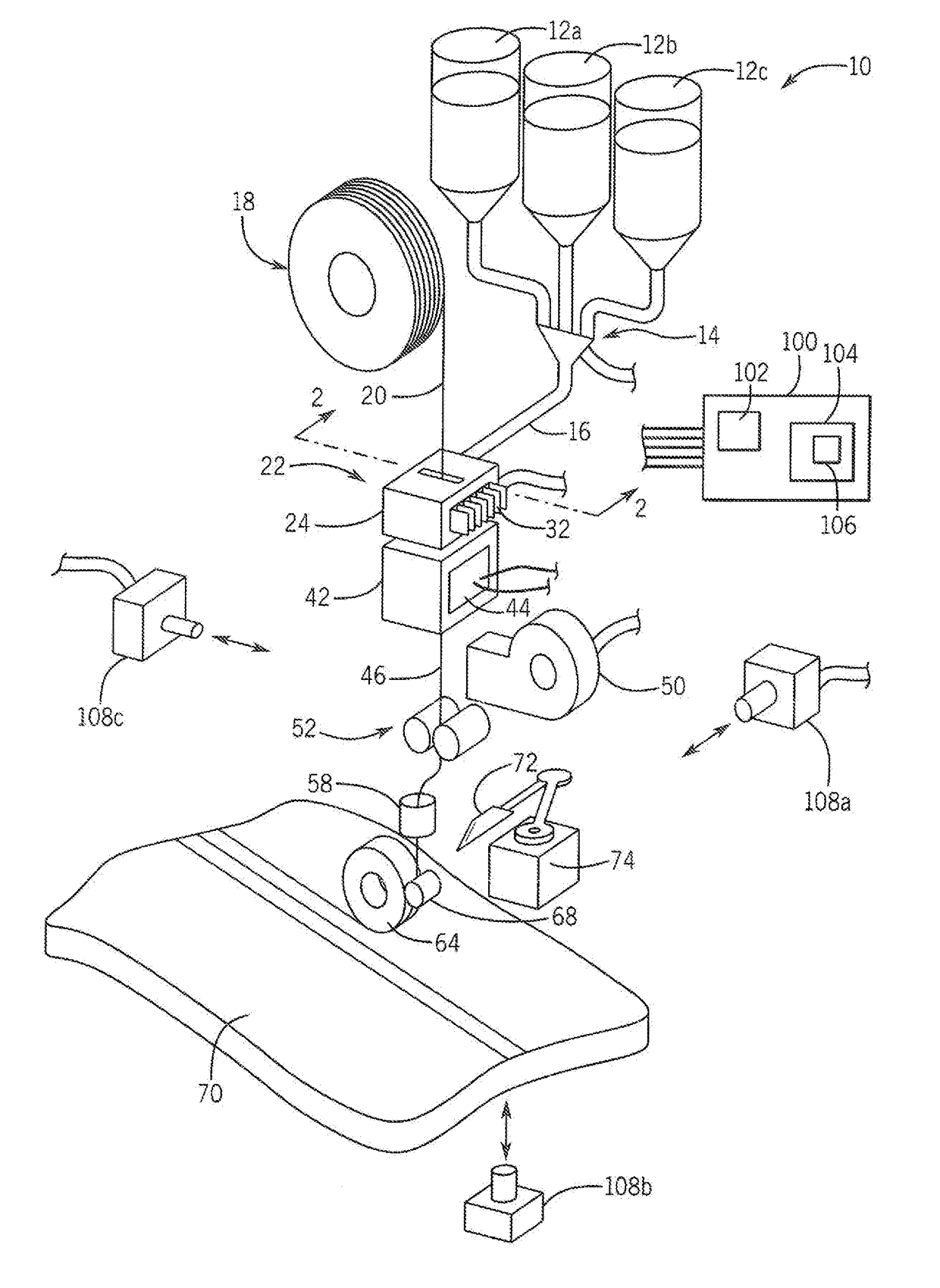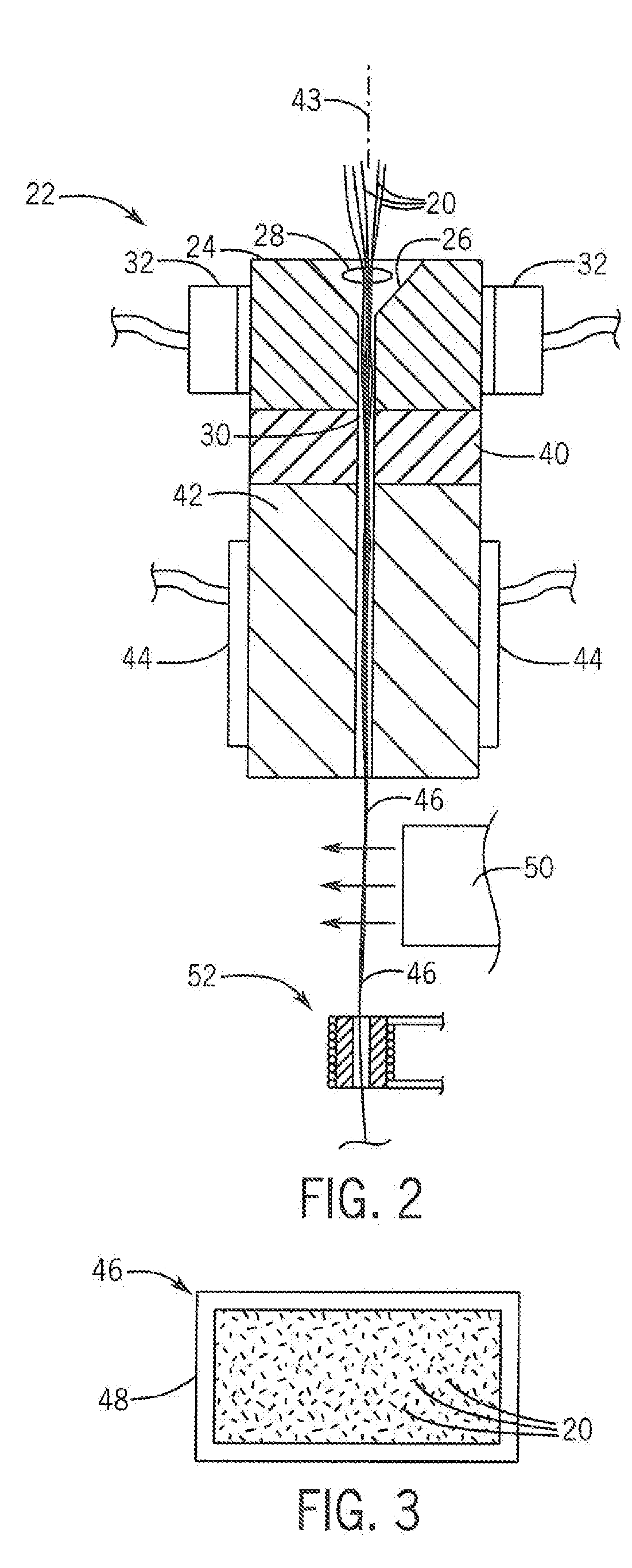Additive Manufacturing Process Continuous Reinforcement Fibers And High Fiber Volume Content
a technology of additive manufacturing and fiber volume content, applied in the field of additive manufacturing, can solve the problems of low performance enhancement, uncured epoxy fibers located in soft materials, and fibers located in uncured epoxy are likely to become clogged in the nozzle, and achieve the effect of constant pulling ra
- Summary
- Abstract
- Description
- Claims
- Application Information
AI Technical Summary
Benefits of technology
Problems solved by technology
Method used
Image
Examples
Embodiment Construction
[0038]Referring now to FIG. 1, an additive printer 10 suitable for use with the present invention may provide for multiple resin reservoirs 12a-c providing materials for the creation of a two-step curing thermoset material. For example, the reservoirs may provide for the ingredients of Daron ZW 015864, a pultrusion-grade, two-step curing thermoset material commercially available from DSM Composite Resins, Zwolle, NL. This material is described in detail in Chaloupka, A., Bezerra, R., Madaksira, V., Taha, Rudolph, N. , “Detection and Modelling of Thermal and Rheological Transitions of a 2-Step-Curing Thermoset Using Dielectric and Standard Measuring Techniques”, 20th International Conference on Composite Materials, Copenhagen, 19-24 Jul., 2015.
[0039]As is generally understood in the art, “thermoset” materials are polymers that may be distinguished from “thermoplastics” by the existence of extensive cross-linking, between polymer chains. This cross-linking gives thermoset materials gr...
PUM
| Property | Measurement | Unit |
|---|---|---|
| length | aaaaa | aaaaa |
| reaction temperature | aaaaa | aaaaa |
| temperature | aaaaa | aaaaa |
Abstract
Description
Claims
Application Information
 Login to View More
Login to View More - R&D
- Intellectual Property
- Life Sciences
- Materials
- Tech Scout
- Unparalleled Data Quality
- Higher Quality Content
- 60% Fewer Hallucinations
Browse by: Latest US Patents, China's latest patents, Technical Efficacy Thesaurus, Application Domain, Technology Topic, Popular Technical Reports.
© 2025 PatSnap. All rights reserved.Legal|Privacy policy|Modern Slavery Act Transparency Statement|Sitemap|About US| Contact US: help@patsnap.com



